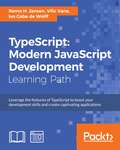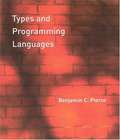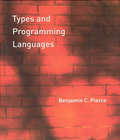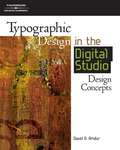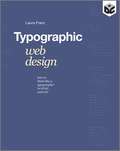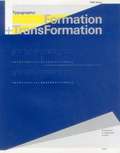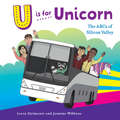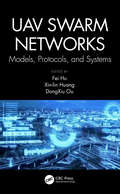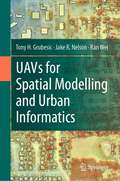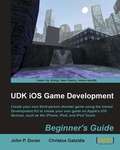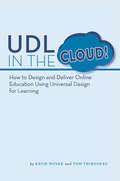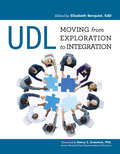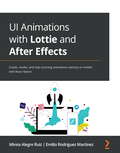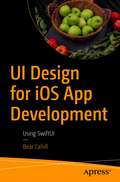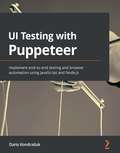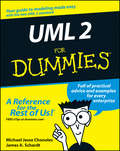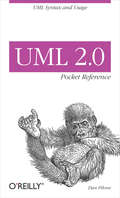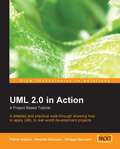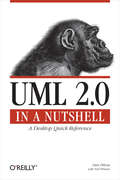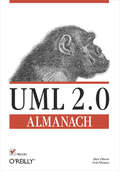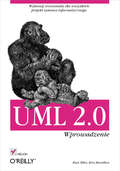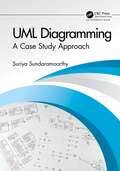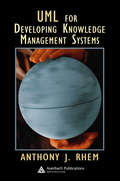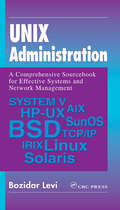- Table View
- List View
TypeScript: Modern JavaScript Development
by Remo H. Jansen Ivo Gabe Wolff Vilic VaneLeverage the features of TypeScript to boost your development skills and create captivating applications About This Book • Learn how to develop modular, scalable, maintainable, and adaptable web applications by taking advantage of TypeScript • Explore techniques to use TypeScript alongside other leading tools such as Angular 2, React, and Node.js • Focusing on design patterns in TypeScript, this step-by-step guide demonstrates all the important design patterns in practice Who This Book Is For This Learning Path is for intermediate-level JavaScript developers who want to use TypeScript to build beautiful web applications and fun projects. No prior knowledge of TypeScript is required, but a basic understanding of jQuery is expected. This Learning Path is also for experienced TypeScript developers who want to take their skills to the next level, and also for web developers who wish to make the most of TypeScript. What You Will Learn • Understand the key TypeScript language features and runtime • Install and configure the necessary tools in order to start developing an application • Create object-oriented code that adheres to the SOLID principles • Develop robust applications with testing (Mocha, Chai, and SinonJS) • Apply GoF patterns in an application with a testing approach • Identify the challenges when developing an application • Migrate JavaScript codebases to TypeScript to improve your workflow • Utilize System.JS and Webpack to load scripts and their dependencies • Develop high performance server-side applications to run within Node.js In Detail TypeScript is an open source and cross-platform typed superset of JavaScript that compiles to plain JavaScript that runs in any browser or any host. TypeScript adds optional static types, classes, and modules to JavaScript, to enable great tooling and better structuring of large JavaScript applications. Through this three-module learning path, you'll learn the ins-and-outs of TypeScript for building more robust software. The first module gets you started with TypeScript and helps you understand the basics of TypeScript and automation tools. Get a detailed description of function, generics, callbacks, and promises, and discover the object-oriented features and memory management functionality of TypeScript. The next module starts by explaining the current challenges when designing and developing an application and how you can solve these challenges by applying the correct design pattern and best practices. You will be introduced to low-level programming concepts to help you write TypeScript code, as well as working with software architecture, best practices, and design aspects. The final module will help you build a complete single page app with Angular 2, create a neat mobile app using NativeScript, and even build a Pac Man game with TypeScript. As if the fun wasn't enough, you'll also find out how to migrate your legacy codebase from JavaScript to TypeScript. By the end of this Learning Path, you will be able to take your skills up a notch and develop full-fledged web applications using the latest features of the TypeScript. This Learning Path combines some of the best that Packt has to offer in one complete, curated package. It includes content from the following Packt products: • Learning TypeScript by Remo H. Jansen • TypeScript Design Patterns by Vilic Vane • TypeScript Blueprints by Ivo Gabe de Wolff Style and approach This is a step-by-step, practical guide covering the fundamentals of TypeScript with practical examples. The end-to-end projects included in this book will give you ready-to-implement solutions for your business scenario, showcasing the depth and robustness of TypeScript.
Types and Programming Languages
by Benjamin C. PierceA type system is a syntactic method for automatically checking the absence of certain erroneous behaviors by classifying program phrases according to the kinds of values they compute. The study of type systems--and of programming languages from a type-theoretic perspective---has important applications in software engineering, language design, high-performance compilers, and security. This text provides a comprehensive introduction both to type systems in computer science and to the basic theory of programming languages. The approach is pragmatic and operational; each new concept is motivated by programming examples and the more theoretical sections are driven by the needs of implementations. Each chapter is accompanied by numerous exercises and solutions, as well as a running implementation, available via the Web. Dependencies between chapters are explicitly identified, allowing readers to choose a variety of paths through the material. The core topics include the untyped lambda-calculus, simple type systems, type reconstruction, universal and existential polymorphism, subtyping, bounded quantification, recursive types, kinds, and type operators. Extended case studies develop a variety of approaches to modeling the features of object-oriented languages.
Types and Programming Languages (The\mit Press Ser.)
by Benjamin C. PierceA comprehensive introduction to type systems and programming languages.A type system is a syntactic method for automatically checking the absence of certain erroneous behaviors by classifying program phrases according to the kinds of values they compute. The study of type systems—and of programming languages from a type-theoretic perspective—has important applications in software engineering, language design, high-performance compilers, and security.This text provides a comprehensive introduction both to type systems in computer science and to the basic theory of programming languages. The approach is pragmatic and operational; each new concept is motivated by programming examples and the more theoretical sections are driven by the needs of implementations. Each chapter is accompanied by numerous exercises and solutions, as well as a running implementation, available via the Web. Dependencies between chapters are explicitly identified, allowing readers to choose a variety of paths through the material.The core topics include the untyped lambda-calculus, simple type systems, type reconstruction, universal and existential polymorphism, subtyping, bounded quantification, recursive types, kinds, and type operators. Extended case studies develop a variety of approaches to modeling the features of object-oriented languages.
Typographic Design in the Digital Studio: Design Concepts
by David A. AmdurThe craft of graphic design requires mastery of typographic design and of the digital applications used to execute it--these companion guides build capacities in both of these areas together. The Design Concepts book will guide readers to observe and reflect on how type functions and to develop strategies for creative typographic expression. The Application Skills Modules book pairs each lesson in typography with a lesson in the digital tools of design production. This book introduces the essential features of the Macintosh Operating System X (OSX) as well as Mac or PC versions of InDesign, Photoshop, Illustrator, and QuarkXPress, so readers can develop good working knowledge in one or all of these applications.
Typographic Web Design: How To Think Like A Typographer In HTML and CSS
by Laura FranzLegibility and readability are the foundations for the typographic theories and practice covered in Typographic Web Design. You'll learn how to choose fonts, organize information, create a system of hierarchy, work with tabular information, create a grid, apply a typographic system across multiple pages, and build a font library. Each chapter provides time-tested typography rules to follow (modified for the web), explains why they work, when to break them, and offers the opportunity to test the rules with hands-on exercises in HTML and CSS. If you don't know HTML and CSS, Typographic Web Design provides a walk-through for each lesson, showing you how to plan and write syntax. Laura Franz is an Associate Professor of Design at University of Massachusetts Dartmouth, where she has taught web typography for 12 years. She has presented lectures and workshops on Typographic Web Design, and has written a course on the topic for Lynda. com.
Typography: Introduction To Typographic Process
by Willi KunzTypographic design begins with a set of information and a concept. The designer, facing a blank sheet of paper or a computer screen, is anxious about the first step to take in developing a design. The elements of typography are an obvious starting point, but often do not get the attention they deserve.
Tyrants on Twitter: Protecting Democracies from Information Warfare (Stanford Studies in Law and Politics)
by David L. SlossA look inside the weaponization of social media, and an innovative proposal for protecting Western democracies from information warfare. When Facebook, Twitter, YouTube, and Instagram were first introduced to the public, their mission was simple: they were designed to help people become more connected to each other. Social media became a thriving digital space by giving its users the freedom to share whatever they wanted with their friends and followers. Unfortunately, these same digital tools are also easy to manipulate. As exemplified by Russia's interference in the 2016 U.S. presidential election, authoritarian states can exploit social media to interfere with democratic governance in open societies. Tyrants on Twitter is the first detailed analysis of how Chinese and Russian agents weaponize Facebook, Instagram, Twitter, and YouTube to subvert the liberal international order. In addition to examining the 2016 U.S. election, David L. Sloss explores Russia's use of foreign influence operations to threaten democracies in Europe, as well as China's use of social media and other digital tools to meddle in Western democracies and buttress autocratic rulers around the world. Sloss calls for cooperation among democratic governments to create a new transnational system for regulating social media to protect Western democracies from information warfare. Drawing on his professional experience as an arms control negotiator, he outlines a novel system of transnational governance that Western democracies can enforce by harmonizing their domestic regulations. And drawing on his academic expertise in constitutional law, he explains why that system—if implemented by legislation in the United States—would be constitutionally defensible, despite likely First Amendment objections. With its critical examination of information warfare and its proposal for practical legislative solutions to fight back, this book is essential reading in a time when disinformation campaigns threaten to undermine democracy.
U is for Unicorn: The ABCs of Silicon Valley
by Loren Girimonte Jasmine WibbensU is for Unicorn: The ABCs of Silicon Valley is a game-changing alphabet book about the lingo of the tech industry. From Angel Investor to Napping Pod to Zero-Emissions Vehicle, this witty book explores the world of the San Francisco Bay Area one letter at a time. Featuring buzzwords like Cryptocurrency, Hoodies, Rest and Vest, Moonshots, and more, these are the ABCs and ideas that innovators—from infants to Xennials—need to onboard now.• Pairs funny, knowing illustration with rhyming verse for each crucial concept• Follows a team of five talented employees (and one scrappy and resourceful raccoon)• Explores Silicon Valley culture letter-by-letterDisruptors of all ages can Pivot to next-gen success as they scale their learning and crush it to become the thought leaders of tomorrow. U is for Unicorn proves that Silicon Valley is rooted not just in a place, but in a state of mind anywhere Java (code and coffee) is flowing.
UAV Swarm Networks: Models, Protocols, and Systems
by Fei Hu DongXiu Ou Xin-Lin HuangUAV swarm network has been used in many critical applications such as disaster recovery, area surveillance, weather monitoring, military communications, etc. There are many challenging R&D issues in UAV network designs, such as the hardware/software integration for a large-scale UAV network management, long-distance data transmissions across UAVs, swarm shape/formation control, intelligent UAV mobility/position prediction, and so on. This book will be the first one to cover the engineering designs (especially network protocol designs) for dynamic, large-scale UAV network. It has the technical models/algorithms and protocol specifications for practical UAV swarm network deployment. · Chapters written by professors, researchers, engineers, and experts in UAV networking fields; · Detailed network protocol descriptions for practical engineering designs; · Covers 7-layer protocols (particularly data routing layer); · Novel AI models/algorithms for intelligent UAV swarming/networking control; · Practical hardware/software implementations for advanced UAV networks. This book is suitable to a variety of audiences: (1) Industry UAV R&D engineers, administrators, or technicians, who would like to grasp the latest trends in UAV communications; (2) College graduate students or researchers, who may want to pursue some advanced research on large-scale UAV swarming and networking technologies; (3) government agencies which determine the future society development in this exciting field; and (4) other interested readers with strong desire to understand the challenges of designing an QoS-oriented UAV network. Book editors: (1) Prof. Fei Hu, Professor in Electrical and Computer Engineering at University of Alabama, USA; (2) Prof. Sunil Kumar, Professor in Electrical and Computer Engineering at San Diego State University, USA; (3) Dr. Scott Pudlewski, Program Director and Senior Scientist of Air Force Research Lab, USA. (4) Dr. Elizabeth Bentley, Program Director and Senior Scientist of Air Force Research Lab, USA.
UAVs for Spatial Modelling and Urban Informatics
by Tony H. Grubesic Ran Wei Jake R. NelsonThis book aims to provide a wide range of real-world applications in using unmanned aerial vehicles (UAVs) for geographic observation, spatial modeling, and urban informatics. Specifically, UAVs are incredibly effective platforms for connecting people, places, and technology. This book explores the utility of UAVs for monitoring, measuring, and improving urban infrastructure systems, urban sustainability, and the urban environment. The dynamism of cities provides opportunities for economic, social, and environmental change, but benchmarking and measuring cities continues to be challenging. This challenge is due, at least in part, to a lack of monitoring systems that can collect and analyze data at a granular enough scale to capture the nuance of local phenomena. UAVs offer a promising mechanism to fill this niche, serving as a measurement platform that can rapidly and inexpensively collect data and monitor change in cities. However, their use is fraught with social, operational, regulatory, and technical challenges for successful deployments. This book provides a resource for urbanists (e.g., planners, geographers, sociologists, epidemiologists, engineers), educators, and students who work with geographic information and seek to enhance these data using data and information from unmanned aerial vehicles. At the same time, we provide operational and methodological frameworks for carrying out these advanced analyses in a manner that considers the challenges of incorporating UAVs in research within the urban environment. We provide six unique applications of UAVs for urban analysis, detailing relevant policy and empirical questions, UAV mission parameters, data collection, spatial modeling, and the associated empirical results. Further, we discuss how best to integrate these results into actionable geospatial intelligence and policy development to improve city infrastructure systems, sustainability, the environment, and neighborhood quality.
UDK iOS Game Development Beginner’s Guide
by Christos Gatzidis John Preston DoranThe book takes a step-by-step process in completing tasks with many detailed illustrations while allowing you to add your own creativity to the mix to create a game that is uniquely your own.If you would like to make iOS games with the Unreal Development Kit or are interested in porting your game from PC to iOS, this book is for you
UDL in the Cloud!: How to Design and Deliver Online Education Using Universal Design for Learning
by Katie Novak Tom ThibodeauUDL in the Cloud helps educators design and deliver more accessible, engaging, and effective online learning experiences. Drawing on years of experience in K-12 and postsecondary settings, authors Katie Novak and Tom Thibodeau offer a highly practical approach to developing e-courses, virtual snow days, flipped classes, and blended learning experiences that meet the needs of diverse learners.
UDL: Moving from Exploration to Integration
by Elizabeth Berquist Nancy S GrasmickThis is the first book to consider scaled-up implementation of Universal Design for Learning in schools, districts, and even states. In this collections of case stories, veteran educators and administrators share their stories, tips, and lessons learned from implementing UDL in a variety of settings. Elizabeth Berquist, a leading voice in the burgeoning UDL field, edits and contributes to the collection. In addition to specific strategies for scaling up UDL, the book provides ideas for improving teacher professional development and classroom practice.
UI Animations with Lottie and After Effects: Create, render, and ship stunning animations natively on mobile with React Native
by Emilio Rodriguez Martinez Mireia Alegre RuizUnderstand and develop immersive animations along with animated stickers for Telegram using Bodymovin, After Effects and LottieFiles and integrate them in your React Native apps using this color guide to UI animationsKey FeaturesExplore key principles of storytelling, 2D digital animation, and design thinkingCreate animations in After Effects, learn how to export them with both Bodymovin and LottieFiles plugins, and tweak them using the LottieFiles platformUnderstand how to implement Lottie animations with React NativeBook DescriptionLottie is a small and scalable JSON-based animation file. LottieFiles is the platform where Lottie animations can be uploaded, tested, and shared. By combining the LottieFiles plugin and the LottieFiles platform, you'll be able to create stunning animations that are easy to integrate in any device. You'll also see how to use the Bodymovin plugin in After Effects to export your animation to a JSON file.The book starts by giving you an overview of Lottie and LottieFiles. As you keep reading, you'll understand the entire Lottie ecosystem and get hands-on with classic 2D animation principles. You'll also get a step-by-step guided tour to ideate, sketch for storytelling, design an icon that will fulfill the needs and expectations of users based on UX, and finally animate it in Adobe After Effects. This will help you get familiar with the After Effects environment, work with vector shape layers, create and modify keyframes using layer properties, explore path and mask features, and adjust timing easily to create professional-looking animations.By the end of this animation book, you'll be able to create and export your own Lottie animations using After Effects and implement them in mobile apps using React Native. You'll also have an understanding of 2D animation best practices and principles that you can apply in your own projects.What you will learnGet started with Lottie and integrate animations either by creating them from scratch or by downloading them through LottieFilesExplore the key principles of 2D classic animationUnderstand the basics to create your first animation using After EffectsExport your animations into Lottie JSON files through BodymovinIntegrate your very first Lottie icon animation inside your React Native appControl your animation within the app through React APIs, while exploring best practices and common pitfallsWho this book is forThis book is for developers and engineers who are already familiar with React Native, as well as UX and UI designers who want to create their own animations and integrate them with their platforms through React Native. Basic knowledge of JavaScript programming is assumed. Beginner-level illustration skills are also preferred, although not necessary.
UI Design for iOS App Development: Using SwiftUI
by Bear CahillDesign is a challenge for most developers. Without a background or training in user interface skills, it’s hard to navigate what choices make the best sense for the end user. This book shows you how to migrate from Storyboards to SwiftUI to design dynamic and engaging UIs for iOS apps. SwiftUI is new in iOS 13 but you may want to support past versions as well. To satisfy this, you'll start by reviewing nib/xib files and Storyboards and then move into SwiftUI and explore how to design apps in both UI toolkits. Gaining a firm base in technologies old and new will allow you to future proof your UI during this period of transition. Developers generally want to stay in code, but UI development tends to be a visual effort. This book takes a very structured and code-like approach to UI design to take the fear away. You’ll grasp Storyboards and Auto-Layout/Constraints, while also learning to move past them with the easier options in SwiftUI. A clear understanding of both technologies is key to keeping your most functional coding and also making things look right. With UI Design for iOS App Development, you’ll learn SwiftUI easily and get back into your code quickly.What You'll LearnBuild iOS app UIs both in current and new paradigmsWork with Storyboards and Auto-Layout/ConstraintsDesign UIs in a coder friendly wayWho This Book Is ForiOS developers building a strong foundation in UI design to fill in the gaps from their training. For veteran developers, it’s vital to be able to match your coding skills with equal UI/UX abilities.
UI Testing with Puppeteer: Implement end-to-end testing and browser automation using JavaScript and Node.js
by Dario KondratiukWrite fail-safe automation tests, device emulation, and browser automation using Puppeteer's Google-powered APIKey FeaturesGet up and running with Puppeteer and discover best practices for automation testingAutomate your modern web applications using Jest and Mocha with PuppeteerGenerate screenshots using Puppeteer and find out how they can be used for UI regression testsBook DescriptionPuppeteer is an open source web automation library created by Google to perform tasks such as end-to-end testing, performance monitoring, and task automation with ease. Using real-world use cases, this book will take you on a pragmatic journey, helping you to learn Puppeteer and implement best practices to take your automation code to the next level! Starting with an introduction to headless browsers, this book will take you through the foundations of browser automation, showing you how far you can get using Puppeteer to automate Google Chrome and Mozilla Firefox. You'll then learn the basics of end-to-end testing and understand how to create reliable tests. You'll also get to grips with finding elements using CSS selectors and XPath expressions. As you progress through the chapters, the focus shifts to more advanced browser automation topics such as executing JavaScript code inside the browser. You'll learn various use cases of Puppeteer, such as mobile devices or network speed testing, gauging your site's performance, and using Puppeteer as a web scraping tool. By the end of this UI testing book, you'll have learned how to make the most of Puppeteer's API and be able to apply it in your real-world projects.What you will learnUnderstand browser automation fundamentalsExplore end-to-end testing with Puppeteer and its best practicesApply CSS Selectors and XPath expressions to web automationDiscover how you can leverage the power of web automation as a developerEmulate different use cases of Puppeteer such as network speed tests and geolocationGet to grips with techniques and best practices for web scraping and web content generationWho this book is forThe book is for testing professionals, QA engineers, and test automation enthusiasts who want to perform end-to-end testing using Google's developer tools. Web developers who want to learn how to use Puppeteer for generating content, scraping websites, and evaluating website performance will find this book useful. Although knowledge of Node.js isn't necessary, basic JavaScript knowledge will assist with understanding the concepts covered.
UML 2 For Dummies (For Dummies Ser.)
by James A. Schardt Michael Jesse ChonolesUses friendly, easy-to-understand For Dummies style to help readers learn to model systems with the latest version of UML, the modeling language used by companies throughout the world to develop blueprints for complex computer systems Guides programmers, architects, and business analysts through applying UML to design large, complex enterprise applications that enable scalability, security, and robust execution Illustrates concepts with mini-cases from different business domains and provides practical advice and examples Covers critical topics for users of UML, including object modeling, case modeling, advanced dynamic and functional modeling, and component and deployment modeling
UML 2.0 Pocket Reference: UML Syntax and Usage (Pocket Reference (O'Reilly))
by Dan PiloneGlobe-trotting travelers have long resorted to handy, pocket-size dictionaries as an aid to communicating across the language barrier. Dan Pilone's UML 2.0 Pocket Reference is just such an aid for on-the-go developers who need to converse in the Unified Modeling Language (UML). Use this book to decipher the many UML diagrams you'll encounter on the path to delivering a modern software system. Updated to cover the very latest in UML, you'll find coverage of the following UML 2.0 diagram types:Class diagramsComponent diagrams*Sequence diagrams*Communication diagrams*Timing diagrams*Interaction Overview diagrams*Package diagrams*Deployment diagrams*Use case diagramsComposite structure diagrams*Activity diagrams*Statechart diagrams** New or expanded coverage in this edition Also new in this edition is coverage of UML's Object Constraint Language (OCL). Using OCL, you can specify more narrowly the functionality described in a given diagram by recording limits that are the result of business rules and other factors. The UML 2.0 Pocket Reference travels well to meetings and fits nicely into your laptop bag. It's near impossible to memorize all aspects of UML, and with this book along, you won't have to.
UML 2.0 in Action: A project-based tutorial
by Barrie Dempster Philippe Baumann Patrick GrassleThe book is uniquely practical. A richly textured case study is used throughout the book. Although some aspects of the Airport Passenger Services business process are simplified for sake of clarity and efficiency, it provides a comprehensive practical grounding for theoretical UML knowledge. The case study itself was developed in partnership with employees of Zurich Airport. The book was written for business analysts, technical architects and developers. It does not require detailed programming knowledge, nor is prior experience of UML mandatory. It shows how, with UML, simple models of business processes and specification models can be created and read with little effort.
UML 2.0 in a Nutshell: A Desktop Quick Reference
by Dan Pilone Neil PitmanSystem developers have used modeling languages for decades to specify, visualize, construct, and document systems. The Unified Modeling Language (UML) is one of those languages. UML makes it possible for team members to collaborate by providing a common language that applies to a multitude of different systems. Essentially, it enables you to communicate solutions in a consistent, tool-supported language.Today, UML has become the standard method for modeling software systems, which means you're probably confronting this rich and expressive language more than ever before. And even though you may not write UML diagrams yourself, you'll still need to interpret diagrams written by others.UML 2.0 in a Nutshell from O'Reilly feels your pain. It's been crafted for professionals like you who must read, create, and understand system artifacts expressed using UML. Furthermore, it's been fully revised to cover version 2.0 of the language.This comprehensive new edition not only provides a quick-reference to all UML 2.0 diagram types, it also explains key concepts in a way that appeals to readers already familiar with UML or object-oriented programming concepts.Topics include:The role and value of UML in projectsThe object-oriented paradigm and its relation to the UMLAn integrated approach to UML diagramsClass and Object, Use Case, Sequence, Collaboration, Statechart, Activity, Component, and Deployment DiagramsExtension MechanismsThe Object Constraint Language (OCL)If you're new to UML, a tutorial with realistic examples has even been included to help you quickly familiarize yourself with the system.
UML 2.0. Almanach
by Dan Pilone Neil PitmanWyczerpuj?cy przewodnik po j?zyku UML 2.0 Specyfikacja j?zyka UML 2.0 Modelowanie statyczne i dynamiczne Rozszerzanie i zastosowania UML-a Ujednolicony j?zyk modelowania (UML) pocz?tkowo s?u?y? do opisu elementów oprogramowania, jednak z powodu swej elegancji i przejrzysto?ci zyskuje na popularno?ci w zakresie modelowania zagadnie? z innych dziedzin. W zwi?zku z tym coraz wi?cej osób ma szans? zetkn?? si? z diagramami w j?zyku UML. Je?li si?gn??e? po t? ksi??k?, prawdopodobnie czeka to tak?e Ciebie. Chcia?by? wiedzie?, co oznaczaj? ró?ne zako?czenia linii na diagramach klas albo zrozumie? skomplikowany diagram interakcji? Zajrzyj do ?rodka. "UML 2.0. Almanach" to kompletny podr?cznik dla u?ytkowników tego j?zyka. Dzi?ki tej ksi??ce poznasz podstawy modelowania w UML-u. Nauczysz si? tworzy? i rozumie? diagramy statyczne, na przyk?ad klas, pakietów czy struktur z?o?onych, a tak?e diagramy zachowania, takie jak przypadków u?ycia, aktywno?ci czy interakcji. Dowiesz si?, jak wszechstronne zastosowania ma ten j?zyk oraz w jaki sposób mo?na go rozszerza? do wykonywania specyficznych zada?. Znajdziesz tu tak?e krótkie wprowadzenie do j?zyka Object Constraint Language (OCL) oraz architektury sterowanej modelem (MDA). Podstawy modelowania w UML-u Diagramy statyczne i diagramy zachowania Dobór odpowiedniego rodzaju diagramu Znaczenie symboli, notacji i linii Rozszerzanie UML-a za pomoc? etykiet, stereotypów i profili Architektura sterowana modelem J?zyk Object Constraint Language (OCL) Praktyczne wskazówki z zakresu modelowania Poznaj tajniki modelowania w j?zyku UML 2.0
UML 2.0. Wprowadzenie
by Kim Hamilton Russ MilesNajtrudniejszym etapem ka?dego procesu tworzenia systemu informatycznego jest wykonanie odpowiedniego projektu. Umiej?tno?? pogodzenia wymaga? u?ytkowników i osób finansuj?cych system z mo?liwo?ciami oferowanymi przez technologi? jest kluczowym elementem sukcesu. Im bardziej z?o?ony system, tym bardziej zawi?y staje si? projekt. Konieczno?? ustandaryzowana technik projektowania systemów zaowocowa?a powstaniem narz?dzi, dzi?ki którym nawet najbardziej skomplikowany projekt mo?na przedstawi? w prosty i czytelny sposób. Takim narz?dziem jest notacja UML -- zestaw ikon tworz?cych diagramy opisuj?ce system i jego elementy. Ksi??ka "UML 2.0. Wprowadzenie" w praktyczny sposób przedstawia techniki modelowania systemów informatycznych za pomoc? j?zyka UML 2.0. Czytaj?c j?, nauczysz si? graficznie przedstawia? otoczenie systemu, wymagania stawiane przez u?ytkowników i metody ich implementacji w systemie. Utworzysz diagramy klas, interakcji, komponentów, wdro?enia i inne, które opisuj? projekt w jednoznaczny oraz prosty sposób. Dowiesz si? tak?e, jak zaplanowa? proces wdro?enia produktu za pomoc? UML. Elementy j?zyka UML Modelowanie wymaga? za pomoc? przypadków u?ycia Diagramy czynno?ci i sekwencji Modelowanie klas i powi?za? pomi?dzy nimi Diagramy komponentów Podzia? modelu na pakiety Modelowanie wdro?enia systemu Poznaj nowoczesne metody projektowania systemów informatycznych.
UML Diagramming: A Case Study Approach
by Suriya SundaramoorthyThe Unified Modeling Language, better known as UML, has become the de facto standard modeling language for analyzing and designing software applications and systems. Software analysis and design is just as much an art as it is a science. UML Diagramming: A Catalog of Cases shows the art and the science behind successful software analysis and design with more than 35 case studies of applications of a variety of industries, including: Transportation Healthcare Supply chain management Education Agriculture Manufacturing The book explains UML diagramming through case studies to help systems and software developers specify, visualize, construct, and document the artifacts of software systems. The cases demonstrate how UML embodies software engineering best practices for modeling large and complex systems. They show how UML is an intuitive diagramming language that can be easily understood by end-users and business professionals. These cases studies also demonstrate how UML is a powerful language for communicating software designs to help developers and end users validate application scope, requirements, and features. Case studies highlighted in the book included: WEBMED healthcare service system services Inventory management system Business process outsourcing (BPO) management system Weather monitoring system Product recommendation system Textile management system Smart traffic management system Online pharmacy management system Placement automation system Farm management system Art gallery management system Website development This catalog of UML case studies is an invaluable reference for students studying software engineering, programmers starting out their careers, and seasoned systems developers needing a reference guide.
UML for Developing Knowledge Management Systems
by Anthony J. RhemUML for Developing Knowledge Management Systems provides knowledge engineers the framework in which to identify types of knowledge and where this knowledge exists in an organization. It also shows ways in which to use a standard recognized notation to capture, or model, knowledge to be used in a knowledge management system (KMS).This volume
UNIX Administration: A Comprehensive Sourcebook for Effective Systems & Network Management (Internet and Communications)
by Bozidar LeviTo configure and maintain an operating system is serious business. With UNIX and its wide variety of "flavors," it can be especially difficult and frustrating, and networking with UNIX adds still more challenges.UNIX Administration: A Comprehensive Sourcebook for Effective Systems & Network Management is a one-stop handbook
